
USS Claxton (DD-571), a Fletcher-class destroyer, was the second ship of the United States Navy to be named for Thomas Claxton, born in Baltimore, Maryland.

USS Fletcher (DD/DDE-445), named for Admiral Frank Friday Fletcher, was the lead Fletcher-class destroyer, and served in the Pacific during World War II. She received fifteen battle stars for World War II service, and five for Korean War service.
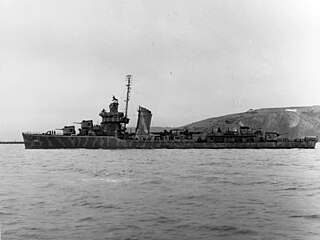
USS Hughes (DD-410) was a World War II-era Sims-class destroyer in the service of the United States Navy.
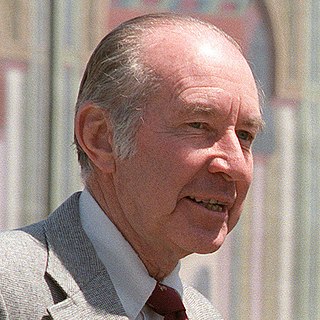
William Graham Claytor Jr. was an American attorney, United States Navy officer, and railroad, transportation and defense administrator for the United States government, working under the administrations of three US presidents.

USS Halligan (DD-584) was a Fletcher-class destroyer of the United States Navy, named for Rear Admiral John Halligan, Jr. (1876–1934).

USS McCalla (DD-488), a Gleaves-class destroyer, was the second ship of the United States Navy to be named for Bowman H. McCalla, who served during the Spanish–American War and would eventually attain the rank of rear admiral.

USS O'Brien (DD-725), an Allen M. Sumner-class destroyer, was the fourth ship of the United States Navy to be named after Captain Jeremiah O'Brien and his five brothers, Gideon, John, William, Dennis and Joseph, who captured HMS Margaretta on 12 June 1775 during the American Revolution.

USS Dufilho (DE-423), was a John C. Butler-class destroyer escort.
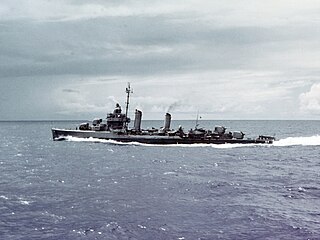
USS Edwards (DD-619) was a Gleaves-class destroyer of the United States Navy. She was the second Navy ship named "Edwards", and the first named for Lieutenant Commander Walter A. Edwards (1886–1926), who as commander of Bainbridge in 1922 rescued nearly five hundred people from the burning French transport Vinh-Long. For his heroism Edwards was awarded the U.S. Medal of Honor, the French Légion d'honneur, and the British Distinguished Service Order.

USS Lardner (DD-487), a Gleaves-class destroyer, was the second United States Navy ship to be named for Rear Admiral James L. Lardner, a Naval officer during the American Civil War. Lardner received 10 battle stars for World War II service.
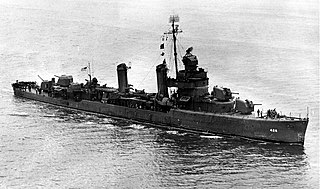
USS Charles F. Hughes (DD-428) was a Benson-class destroyer in the United States Navy during World War II. She was named for Charles Frederick Hughes.

USS Frazier (DD-607) was a Benson-class destroyer in the United States Navy during World War II.
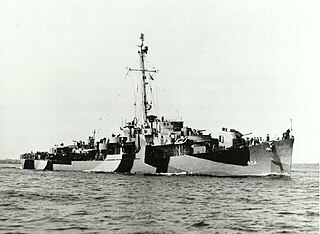
USS Eversole (DE-404) was a John C. Butler-class destroyer escort built for the United States Navy during World War II. Named for Lieutenant John Thomas Eversole,, she was the first of two U.S. Naval vessels to bear the name. The vessel was torpedoed and sunk on 28 October 1944.
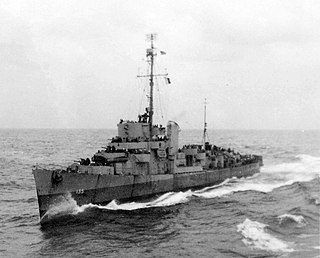
USS Flaherty (DE-135) was an Edsall-class destroyer escort in service with the United States Navy from 1943 to 1946. She was sold for scrap in 1966.

USS Fessenden (DE-142/DER-142) was an Edsall-class destroyer escort built for the U.S. Navy during World War II. She served in the Atlantic Ocean and the Pacific Ocean and provided destroyer escort protection against submarine and air attack for Navy vessels and convoys.
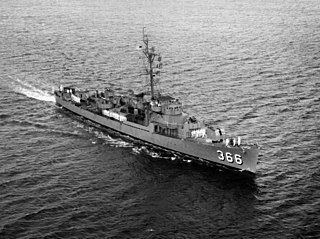
USS Alvin C. Cockrell (DE-366) was a John C. Butler-class destroyer escort in service with the United States Navy from 1944 to 1946 and from 1951 to 1968. She was finally sunk as a target in 1969.
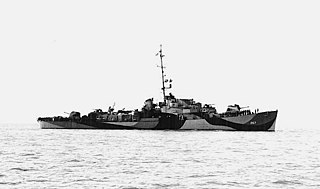
USS French (DE-367) was a John C. Butler-class destroyer escort in service with the United States Navy from 1944 to 1946. She was scrapped in 1973. The ship was named in honor of Neldon Theo French who was awarded the Navy Cross for his actions during the Guadalcanal Campaign.

USS Richard S. Bull (DE-402) was a John C. Butler-class destroyer escort in service with the United States Navy from 1944 to 1946. She was finally sunk as a target in 1969.

USS Keith (DE-241) was an Edsall-class destroyer escort in service with the United States Navy from 1943 to 1946. She was scrapped in 1974.
Lieutenant Commander (USN) Robert Adrian Marks was the U.S. Navy pilot who rescued 56 crewmen of the USS Indianapolis after it was sunk by Japanese torpedoes. Marks disobeyed standing orders not to land in open ocean and rescued survivors by lashing them to the wing. His actions rendered the aircraft unflyable. He was awarded the Air Medal by Chester W. Nimitz. After the rescue, the plane was sunk by U.S. forces as it was not able to be recovered.



















